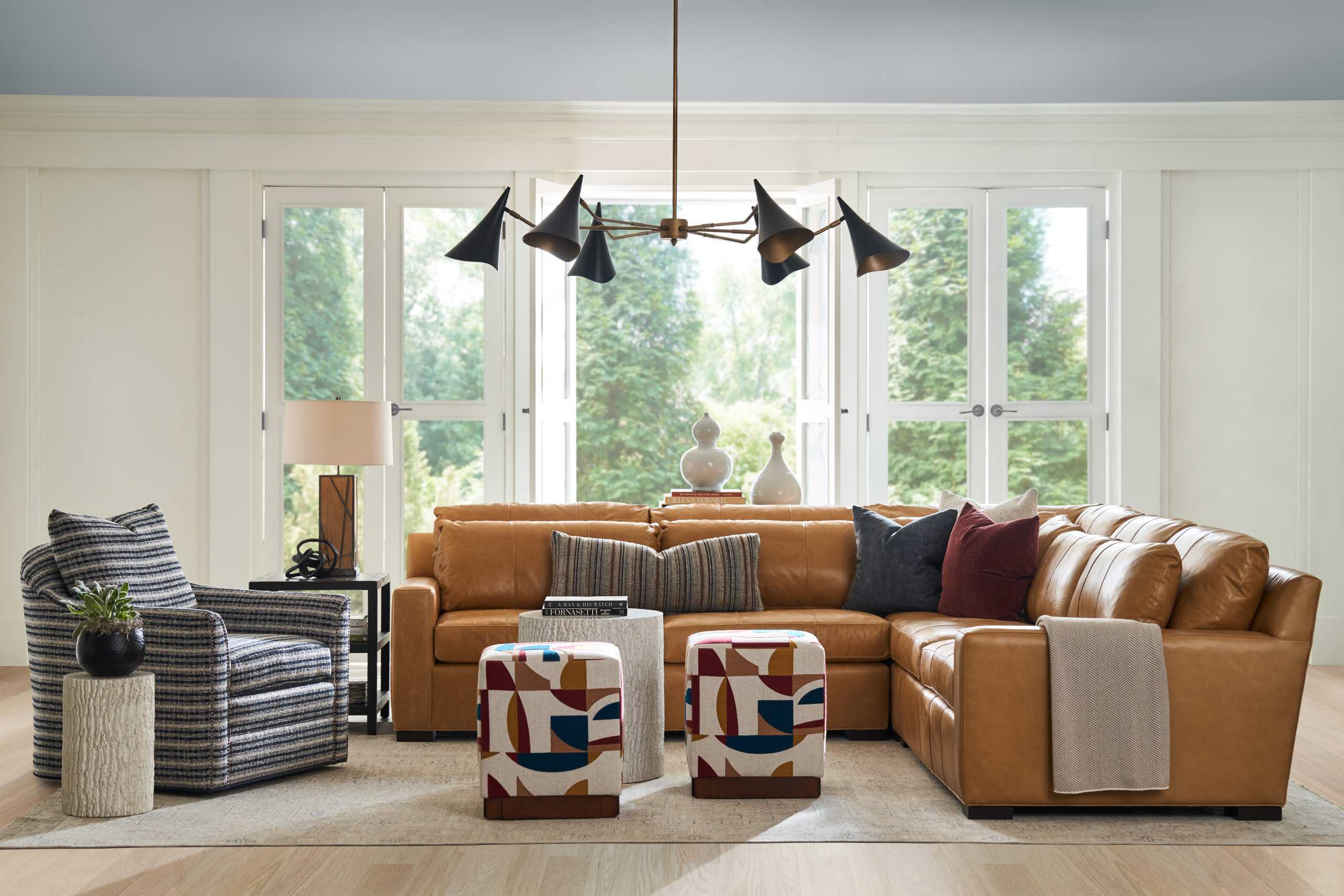Over the past few years we have seen a significant swing of the pendulum in the interior design world. Some think it was just a matter of time, while others believe that the existential dread, and let’s face it depressing years of the pandemic pushed us into this new era of colour, pattern, and gusto – a rebellion against the restrained and somewhat meek styles of the 2010s. Whatever the reason, our tastes have changed and interiors along with them.
Unlike in fashion, where we see many micro trends come and go per year, in interiors things tend to change much more slowly. This is, of course, because it’s much easier to change your sweater than it is your sofa (both from a cost and logistical standpoint.) So, any trends we are witnessing having their heyday now have actually been happening gradually over time. For example, we have been seeing the transition from cool to warm neutrals for almost 10 years now, so it’s not like brown just became the reigning colour overnight.
So, while none of these trends are brand new per say, they are very much moment in 2025, and in our opinion are here to stay for the foreseeable future.
We’ve created this detailed guide in the hopes that it helps you filter through the deluge of social media stating what the trends of year are (but not actually giving you much information on the subject) so you can assess which ones resonate with you, and which you are happy to pass on. It’s also our goal to help you get away from an “all or nothing” mindset when it comes to interiors – yes you are allowed to cherry pick elements you like and reject ones you don’t from really any style out there… it’s your home after all!
Maximalism
This is perhaps the most significant cultural shift that we are seeing in interiors (besides the transition from grey to brown as the prevailing neutral that we discussed last year.) For many years we were inundated with images of very minimal design with a heavy Scandinavian influence – very few prints, limited colour palette of mostly neutrals with maybe a pop of colour here and there, and minimal detailing on furniture.
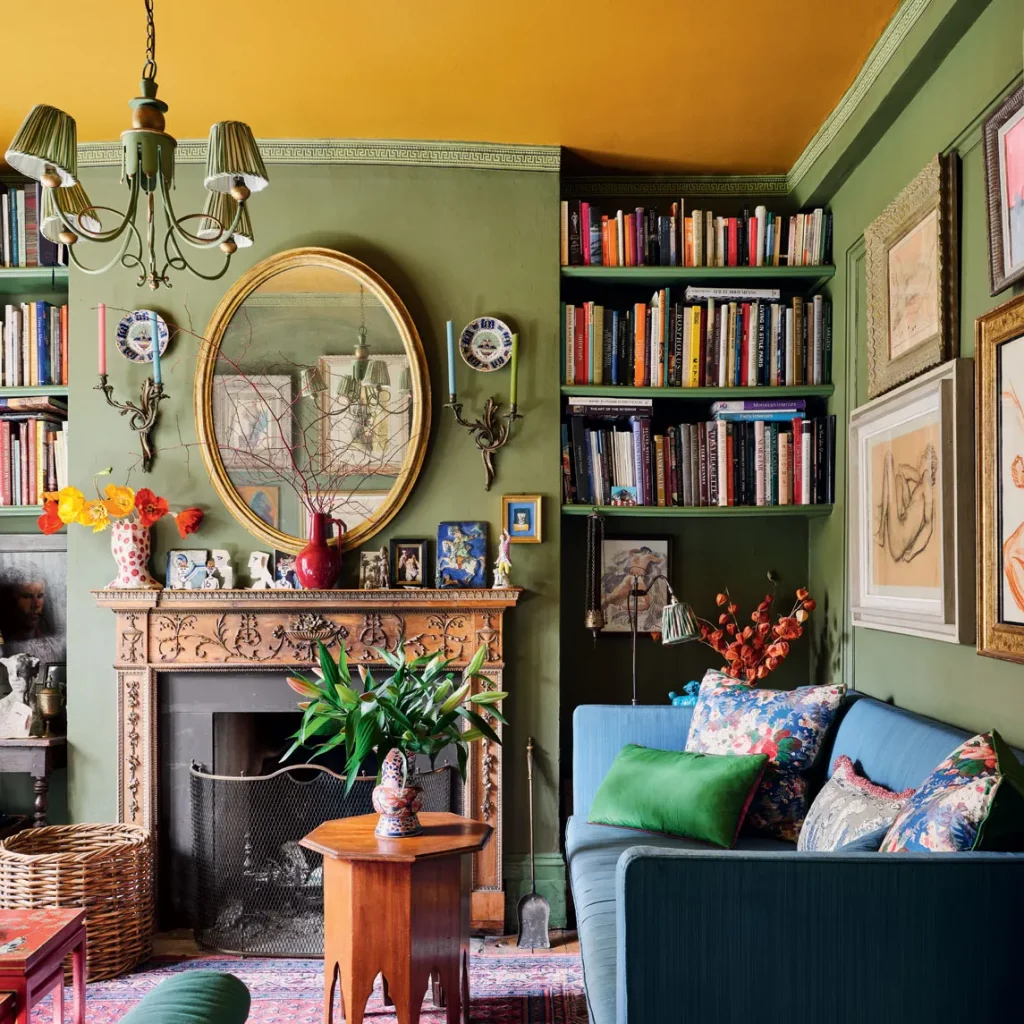
Now we are seeing the embrace of colour, pattern, and layered details in a big way – enter maximalism. This design style is not really a “style” of it’s own per se… but more so an application of a design style. You can have traditional maximalist, contemporary maximalist, bohemian maximalist etc. Of course, certain design styles do lend themselves better to the maximal ethos.

Many folks think that a maximalist space means having every square inch of surface and floor space covered, and while that can be true of some spaces, it doesn’t have to be. You could create a more maximalist aesthetic in your home by layering several different prints together, choosing a bold wallpaper, and playing with a spectrum of colours as opposed to sticking with a refined palette. Maximalism does not need to mean clutter.
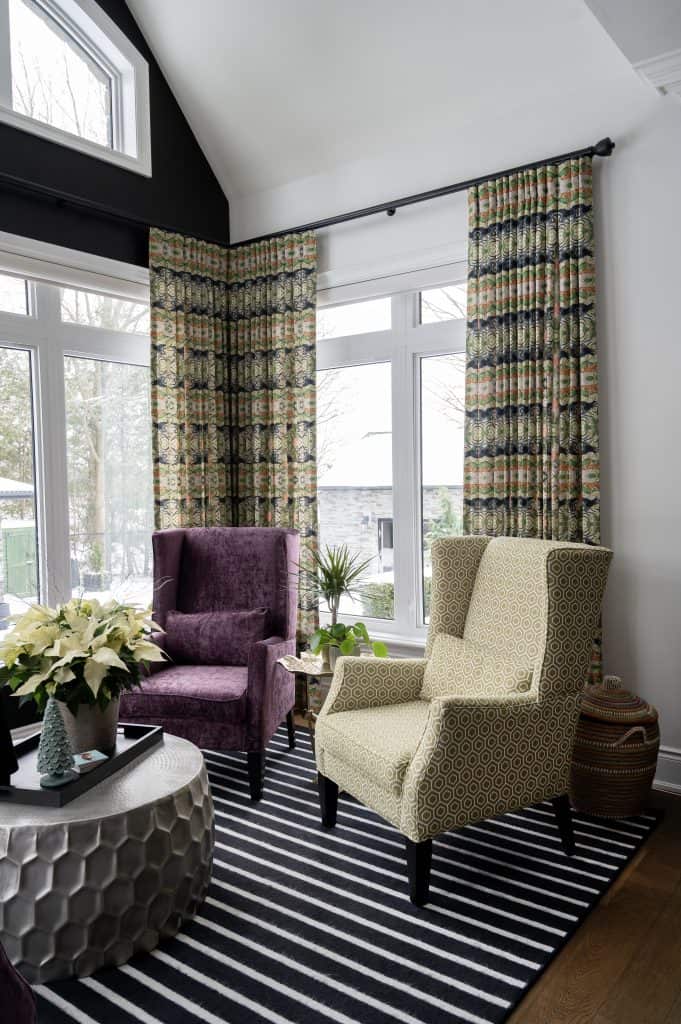
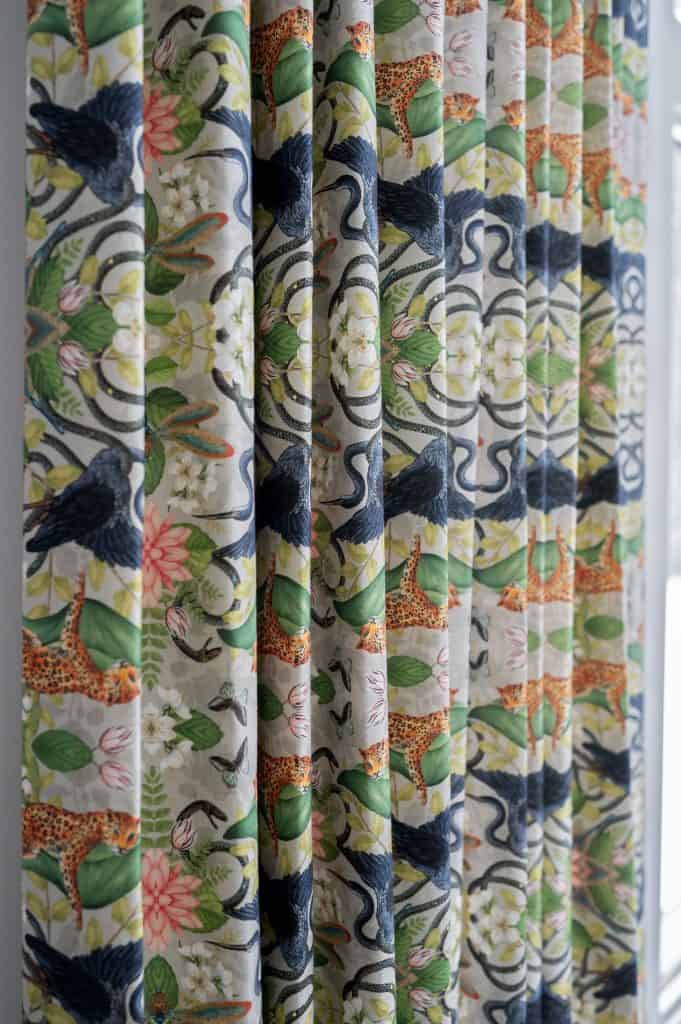
Above is another example of a maximalist setting that does not feel overwhelming or cluttered in any way. Note the bold yet harmonious layering of pattern and colour throughout the the drapery, wing chair, and rug. If this drapery fabric by Lee Jofa doesn’t perfectly represent the maximalist movement, we don’t know what does. These clients have a fondness for bold pattern with a little bit of an edge, so having some elements of black was a must to avoid feeling too precious. The soft chartreuse seen in the drapery fabric and wing chair mellows out the vibrant plum and high contrast black and white striped rug, while the hexagon pattern is repeated in the hammered metal coffee table, creating cohesion alongside contrast. This was an exceptionally fun custom drapery project to work on with some amazing and creative clients! (See the entire shoot in our Portfolio)
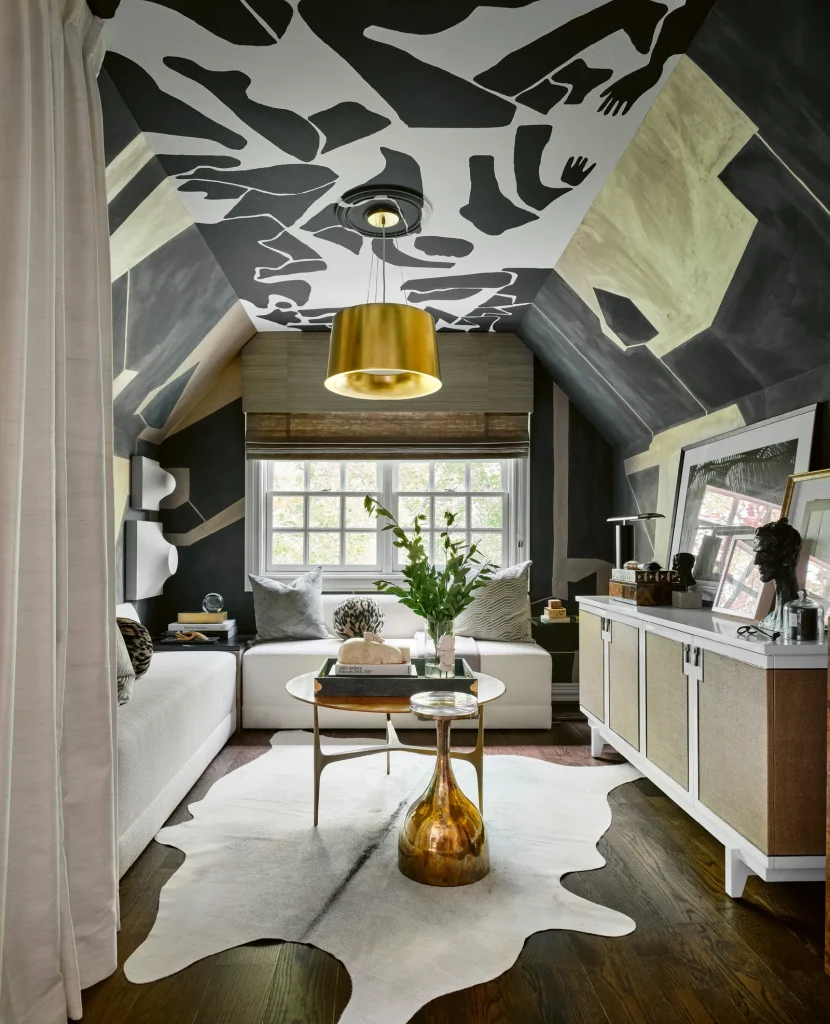
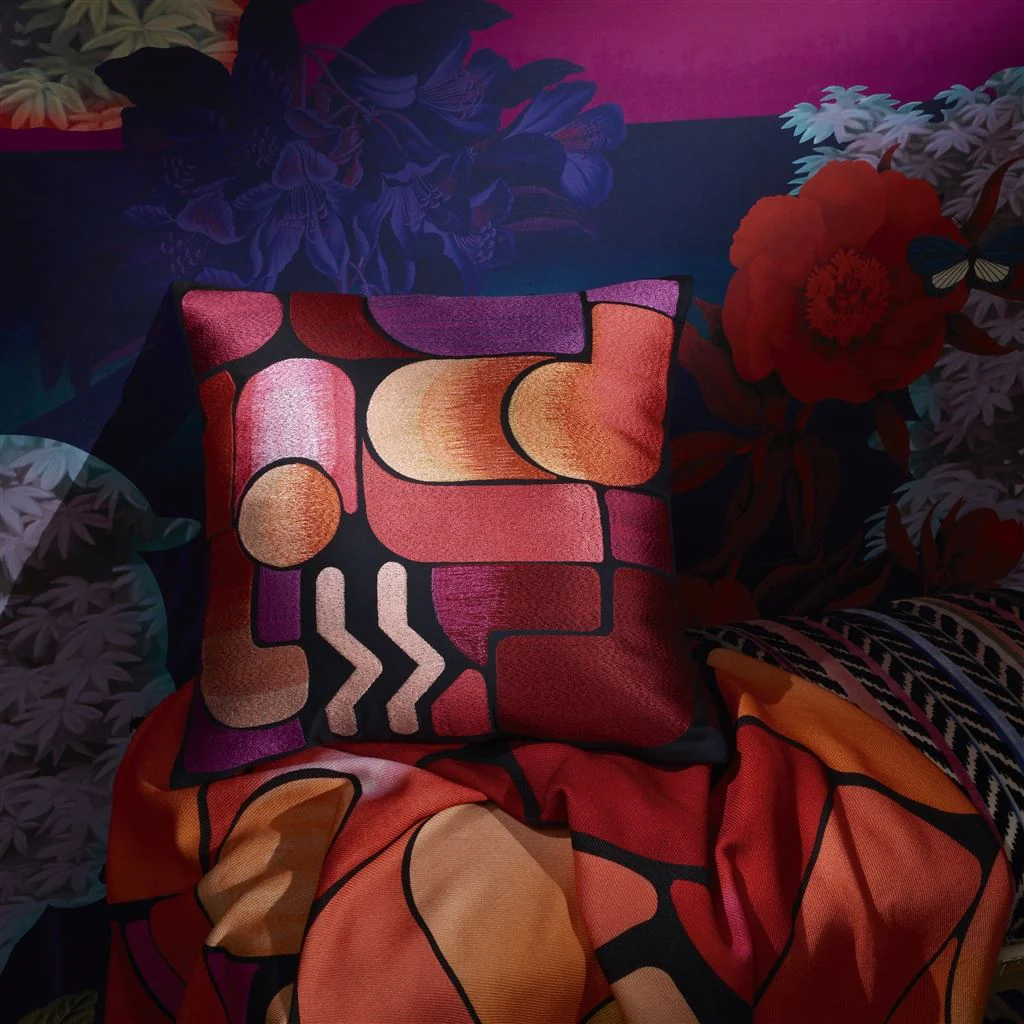
Really, maximalism is what you make it! At it’s core, it’s about being bold, going big, and layering colour and/or pattern to create a space that is bursting with personality – restraint is not the name of the game here.
Traditional Style
The shift back toward a more traditional style goes hand in hand with the return of maximalism, as it inherently leans toward an embrace of ornate details, layering, and opulence. The truth is, this style has been alive and well in areas like England and the American South the entire time we have been minimizing, whitewashing, and fully ensconcing ourselves in Scandi and midcentury design.
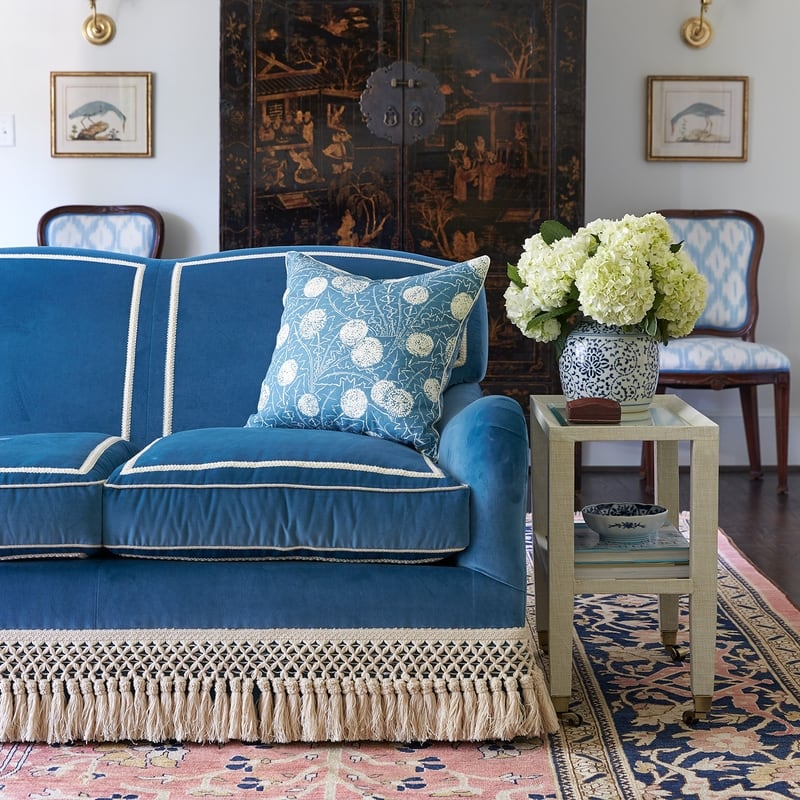
This design style is all about the details: think luxurious patterned fabrics, decorative woodwork, trims and fringes, ornate light fixtures. Layering these elements in a thoughtful way will have your eye moving about the room as opposed to fixated on one statement piece.
When we refer to traditional style, generally speaking we are referencing design inspired by 18th and 19th century European interiors. However, the beauty of a traditional aesthetic is that there are many time periods and global regions to draw inspiration from, mixing and matching to create a space that feels warm, inviting, and full of character. Traditional design is truly an anti-trend, favouring timeless and classic silhouettes, colours, and motifs.
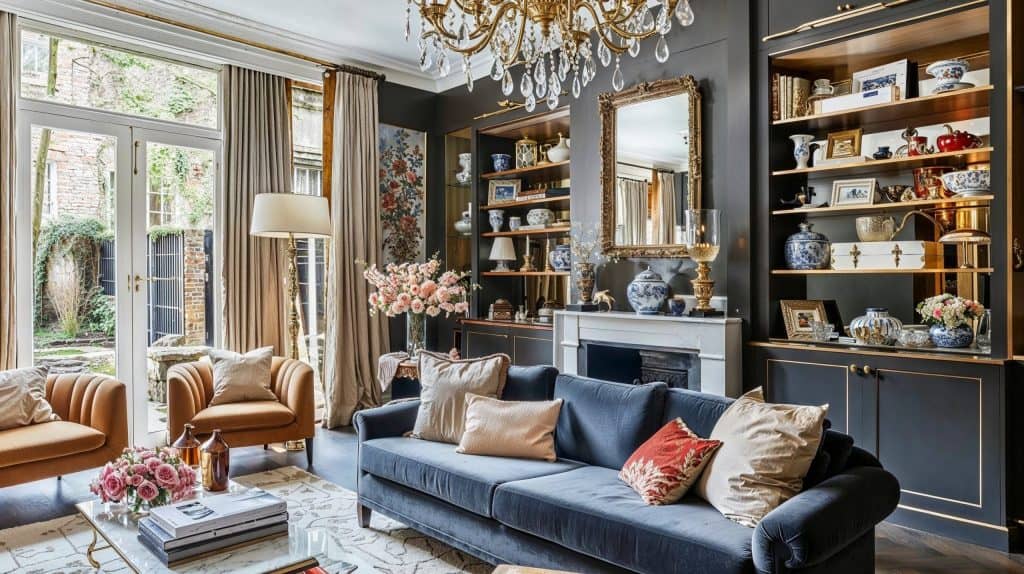
Don’t feel boxed in by attempting to recreate a specific time period! Have fun, and play with an updated colour palette, contemporary artwork and lighting, and more casual fabrics. This is not about creating a time capsule – it’s about embracing the beauty that the past has to offer and bringing those details into the modern era.
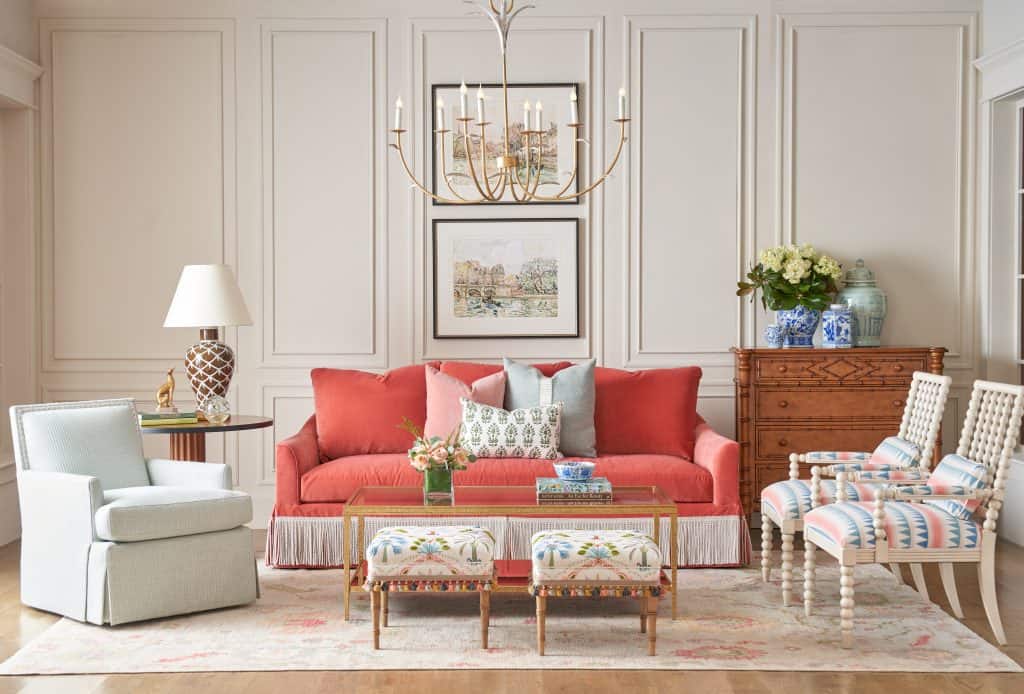
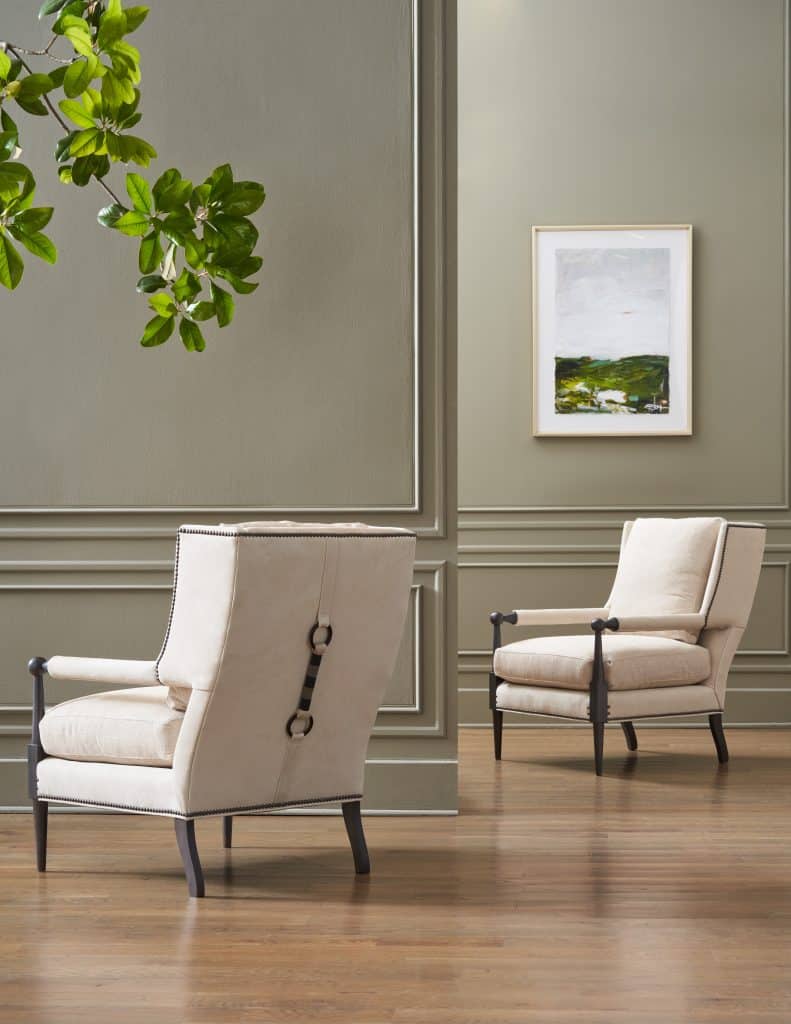
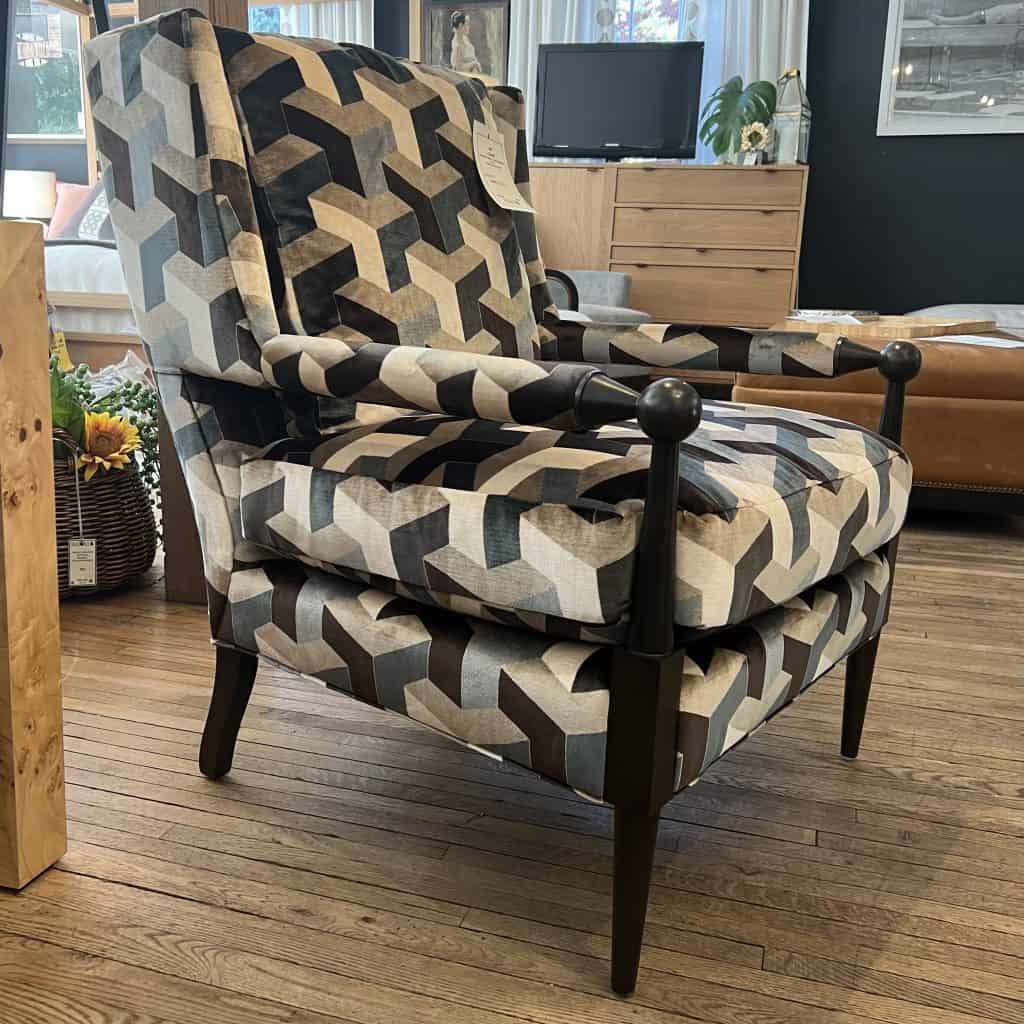
Natural Wood Tones
It’s no secret that wood fell somewhat out of favour to painted finishes, metal, and stone over the past 10-15 years. Well, we’re here to tell you that wood is back in a big way – but not like before (don’t worry, no one is forcing you back to that oak kitchen or 16 piece cherry dining set.)
In general, the prevailing wood tones of the moment are fairly neutral – meaning they don’t lean overly warm or cool. Of course, if you are leaning into an aesthetic that harkens back to a different time period (such as traditional, retro, art deco, etc.) this will be less applicable and you may want to explore introducing a wood tone that skews farther toward the warm end of the spectrum – think rich mahogany and cherry pieces.
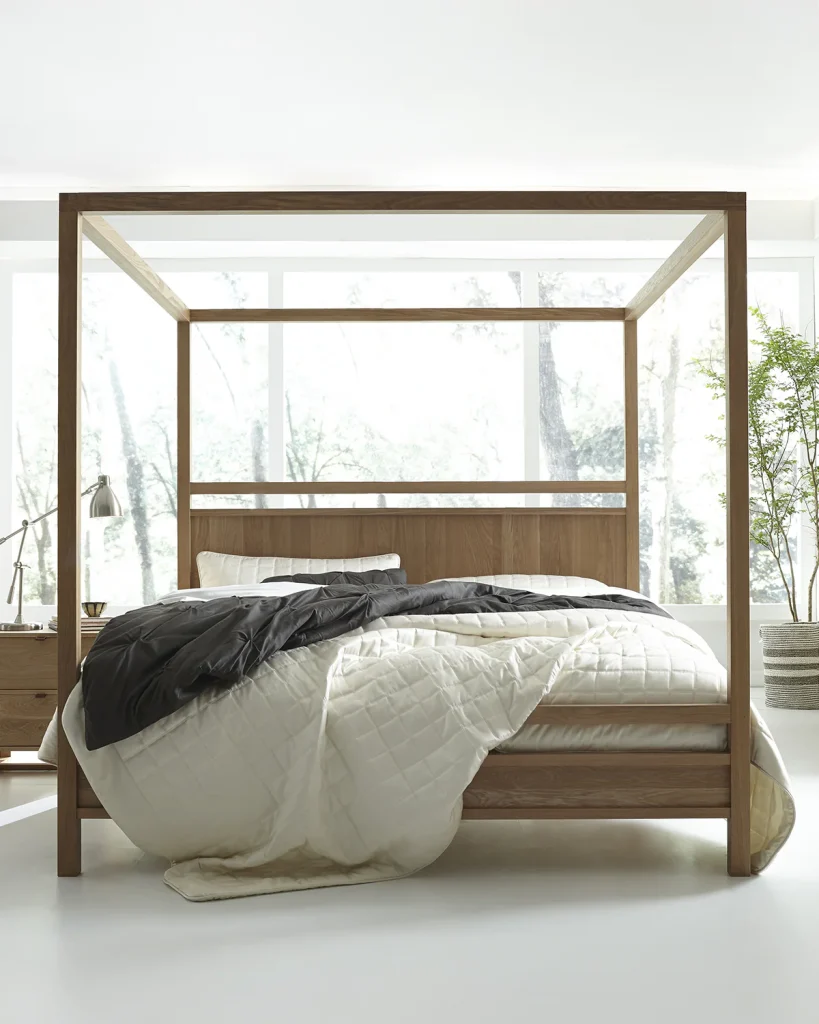
Another significant difference in modern wood finishes is the sheen. Today’s wood tends to lean toward a more matte finish as opposed to high gloss, which is a direct correlation to the prevailing casual aesthetic over formal – a bonus here is that matte finishes are much easier care than high gloss, both in the long term in regards to showing nicks and scratches, but also dust and finger/paw print visibility!
We’re also seeing a lot more mixing of wood tones, which was seen as a big no-no in the past. A few things to consider when pulling this off:
- Identify your base wood and stick with it – for most people this will be their floors, but really it can be whatever wood tone will be the most predominant. The goal here is not to mix tones in equal measure, but to sprinkle other accent tones in with your base.
- Pay careful attention to undertones: In general, it’s best to keep wood tones within the same temperature (i.e. warm or cool) to avoid clashing.
- Unless you are well versed in the art of decorating, it’s usually best to stick to 2-3 wood tones at maximum.
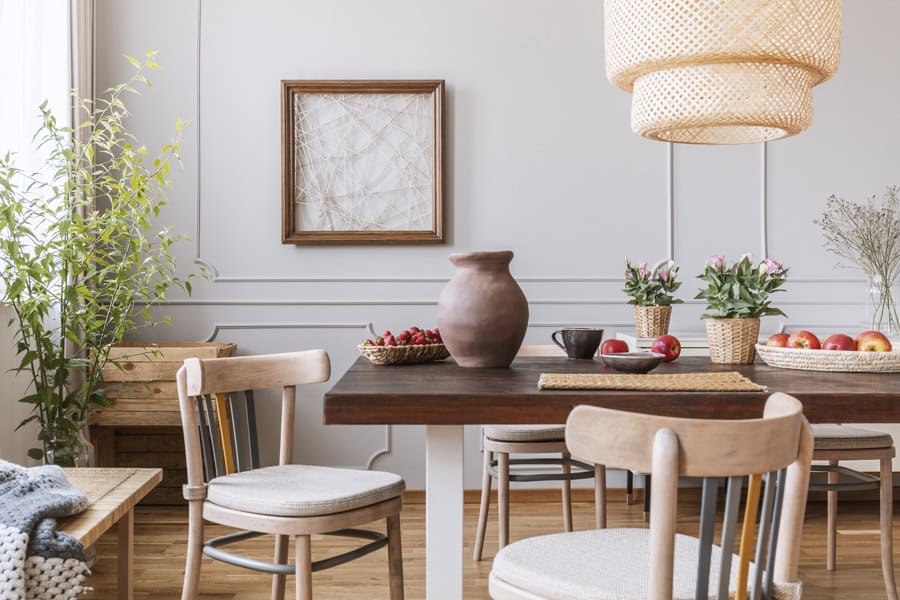
We personally love this mixing, as well as adding in a few painted pieces here and there – this variety helps the space feel visually balanced as well as avoiding an overload of one finish, which can feel a bit flat and match-y match-y (read: dated.)
The biggest shift we have been seeing is the move back to natural wood kitchen cabinetry, which feels like it has been banished for quite some time in favour of paint (it’s time to say goodbye to all-white kitchens en mass!)
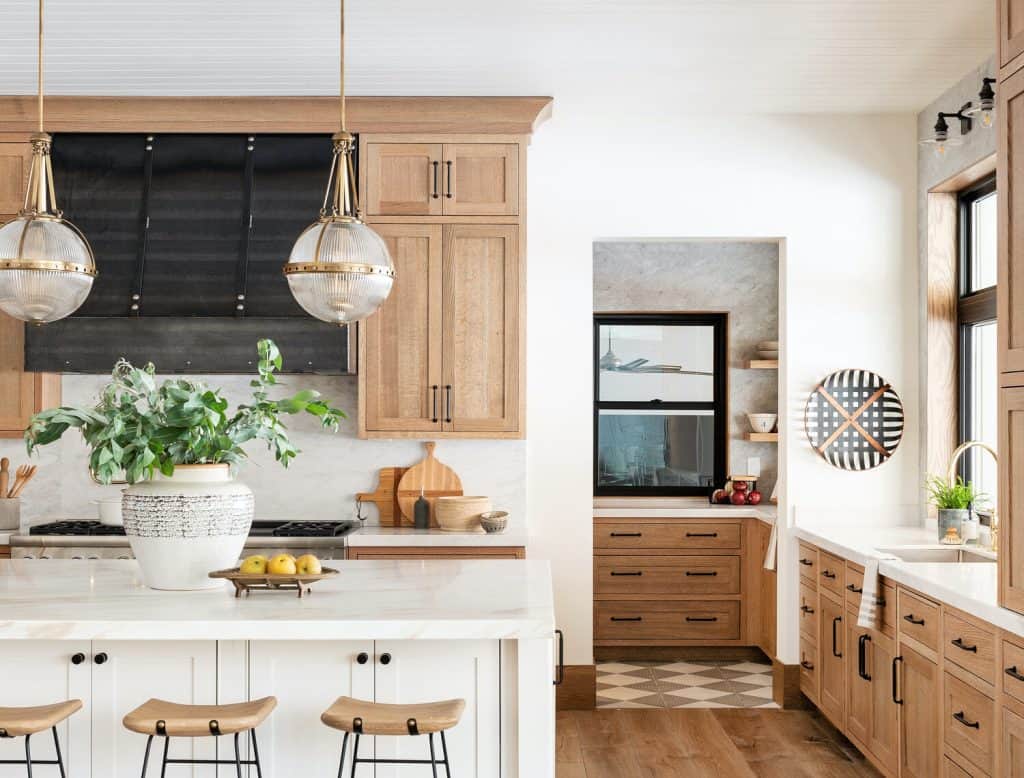
Really, the welcoming back of wood is all about embracing the warmth and natural beauty that wood has to offer. It’s worth investing here in timeless, good quality solid wood if you can, as these pieces will last for a very long time if cared for properly, and can be refinished if your tastes change down the road.
Art Deco
This design style is all about opulence! It’s the antithesis to Modern Farmhouse and all things rustic, neutral, and causal. The hallmarks of art deco style include luxe fabrics, glamorous metallics, bold jewel tones, curved lines, geometric patterns, high contrast colour blocking.
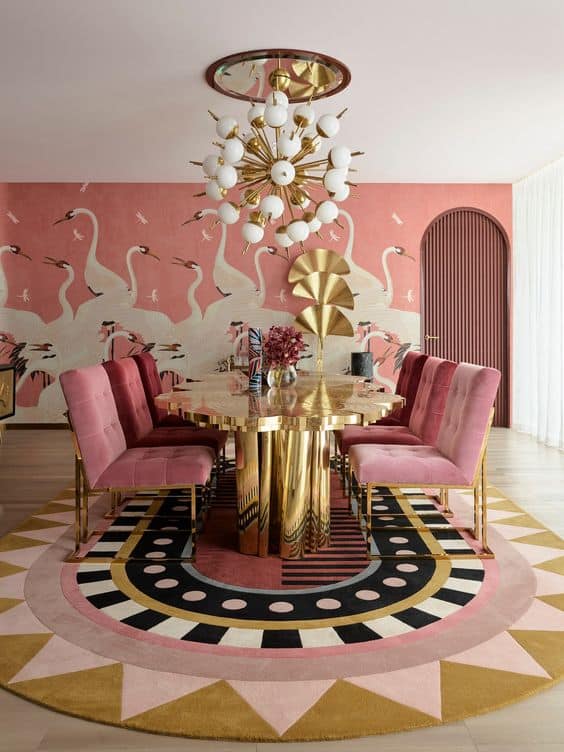
Art Deco style came to be during the roaring 20’s (think The Great Gatsby,) but can be easily adapted for the current design climate. We’re seeing “New Deco” style become particularly prevalent in light fixtures, curved sofas, patterned wallpaper, wood panelling on walls, and gold inlay details on cabinets and chests. New Deco is just what it sounds like – an updated variation of Art Deco for the current design climate and modern family home.
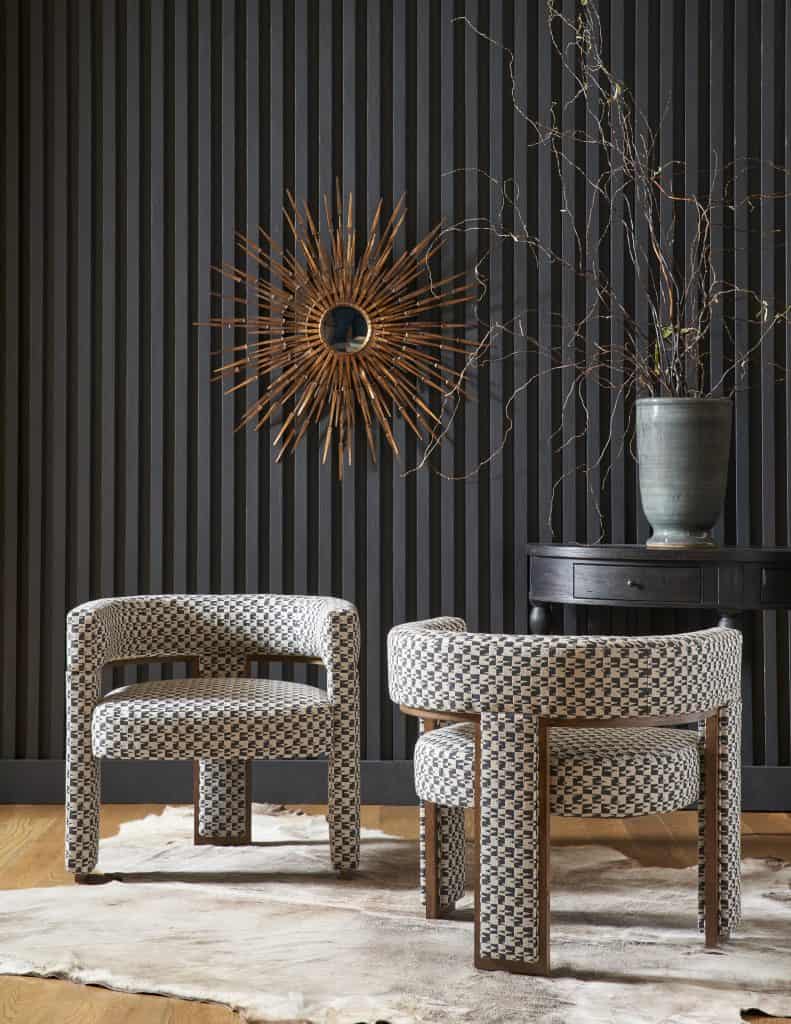
One of the fabulous things about Art Deco design is that it can still feel modern and fresh as it relies on sleek profiles and clean lines – perfect for those who want something a little more glamorous and formal without veering into traditional.
Just like with resurgence of Traditional, Art Deco’s revival is not about recreating an era, but instead introducing a tasteful nod to the past.
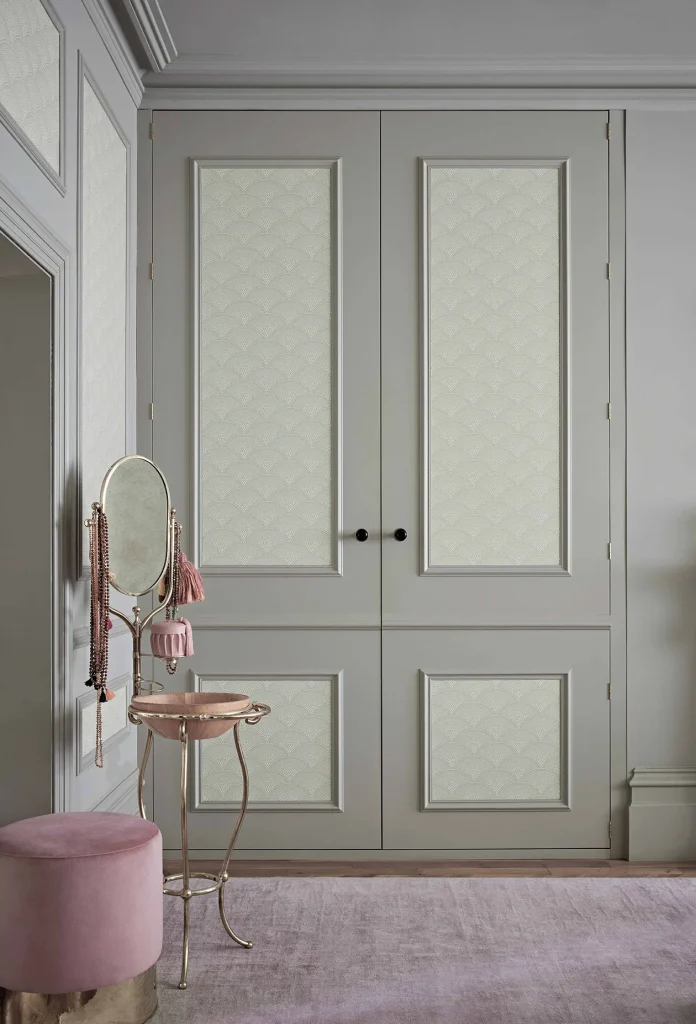
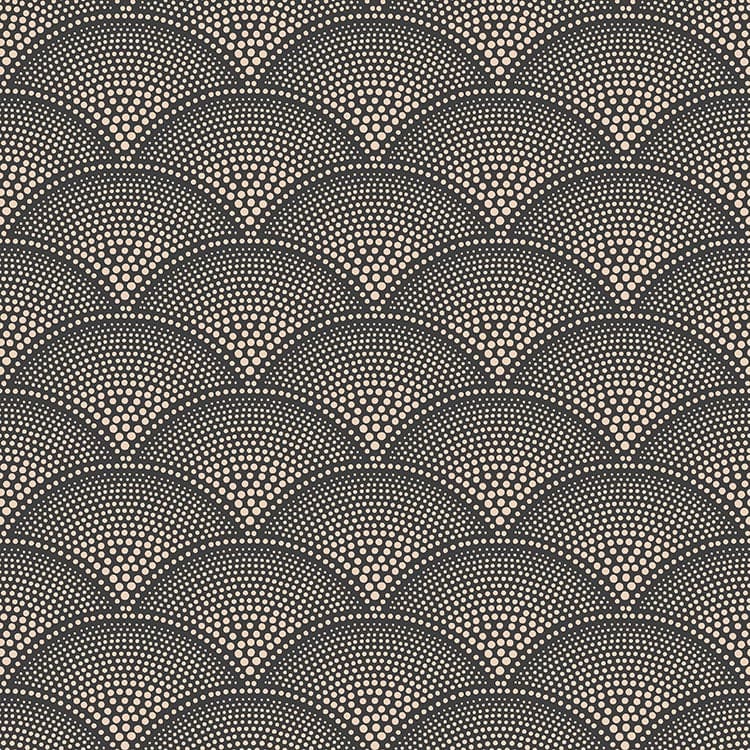
Dark & Moody Tones
The overwhelming amount of dark and moody spaces we’ve been seeing over the past year or two is a direct response to the reigning era of bright, white interiors. The people have spoken – and they want deep, saturated colours on theirs walls, furniture, and even ceilings.
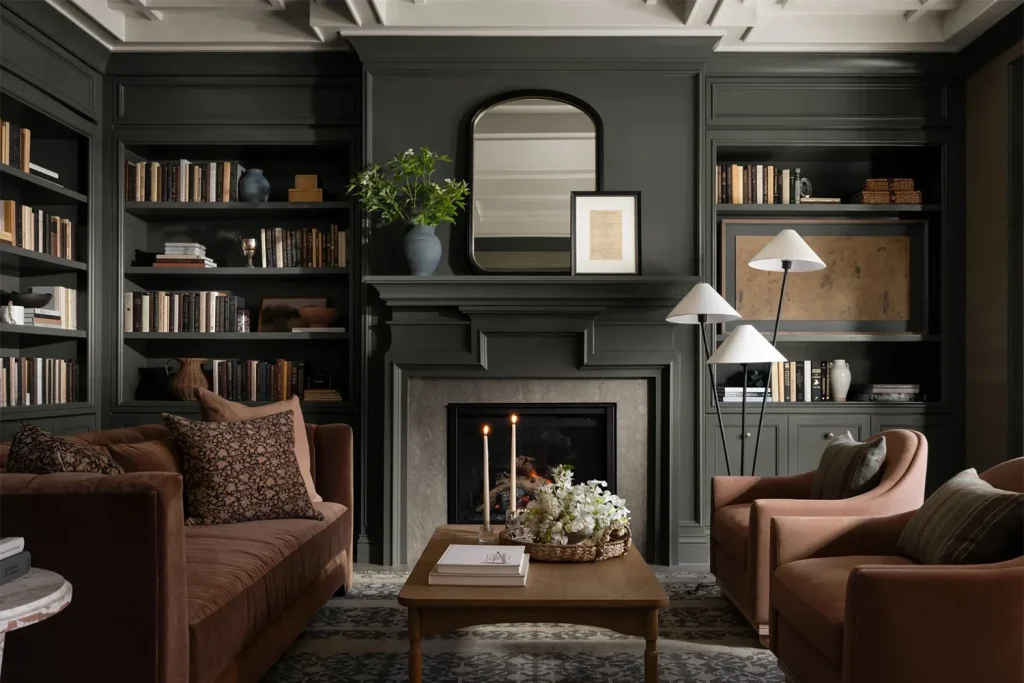
We are seeing deep shades of teal, aubergine, green, chocolate brown, and even black washed over homes everywhere. This is a fun style to experiment with because it doesn’t require a ton of commitment at the offset… you can experiment with a paint colour here, an accent piece there, and then decide just how far you want to go to the dark side. You may wish to go all in, leaning to the cozy factor (this works especially well in rooms with lower levels of natural light – don’t fight it!), or you may wish to keep some lighter elements and retain higher levels of contrast in the space.
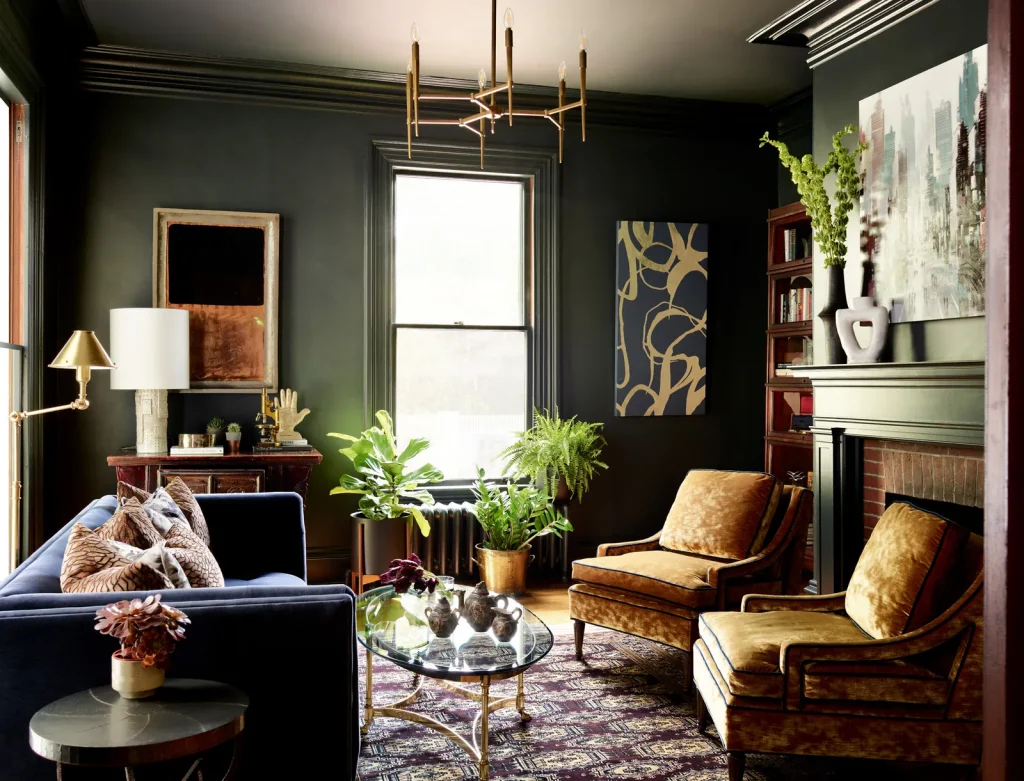
Something to remember if you’re thinking of dipping a toe into this aesthetic – lighting is everything. While we always believe that good lighting is a key component to good design, it becomes especially important when going for this moody vibe – can you imagine a cozy library clad with deep forest wall, rich leather chairs, a sumptuous velvet sofa, and…. 20 blinding pot lights? No – it just doesn’t work. You are going to want to lean heavily on accent lighting like wall sconces and picture lights, and make sure any overhead lighting is on a dimmer.
Wallpaper can be a really fun way to play with a dark and moody ambience into your home. There are so many options available depending on your personal style – from a very subtle dark grasscloth to a wild and whimsical pattern. Because this style lends itself well to an edgier vibe, you can really lean into that with wallcoverings!
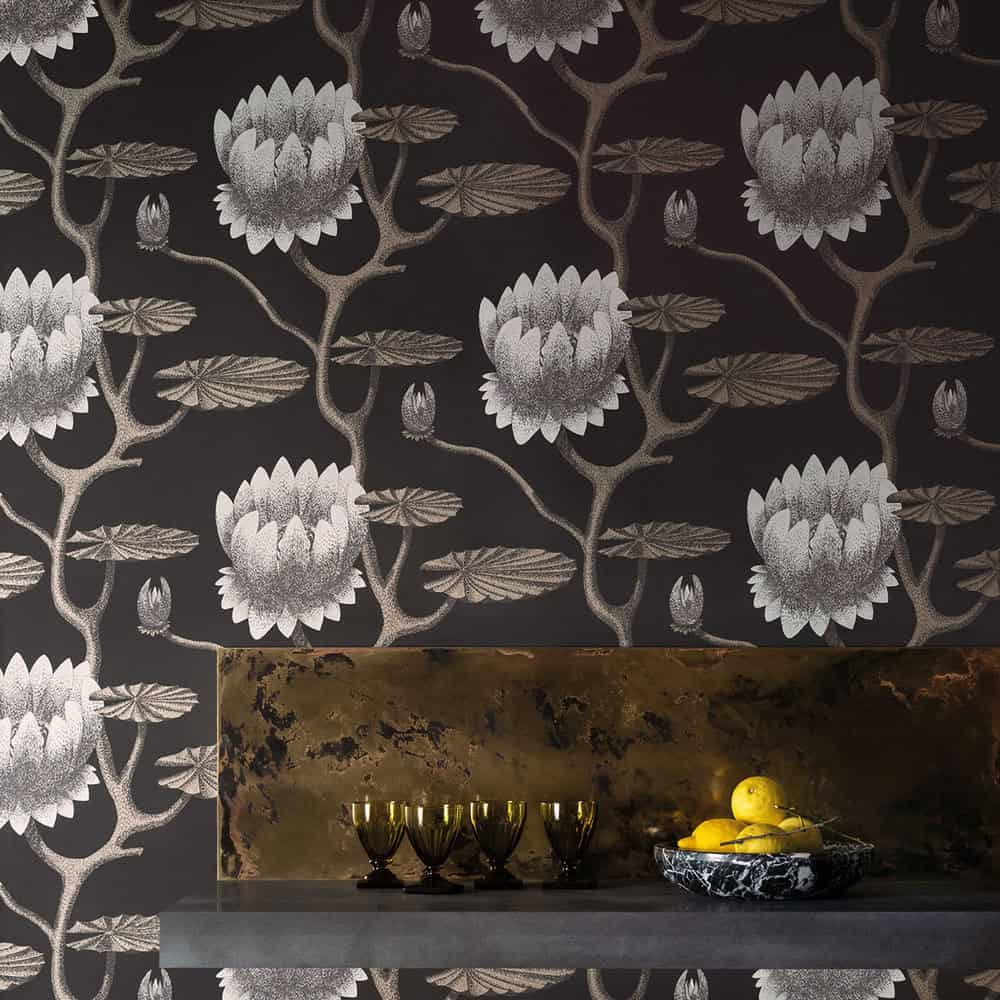
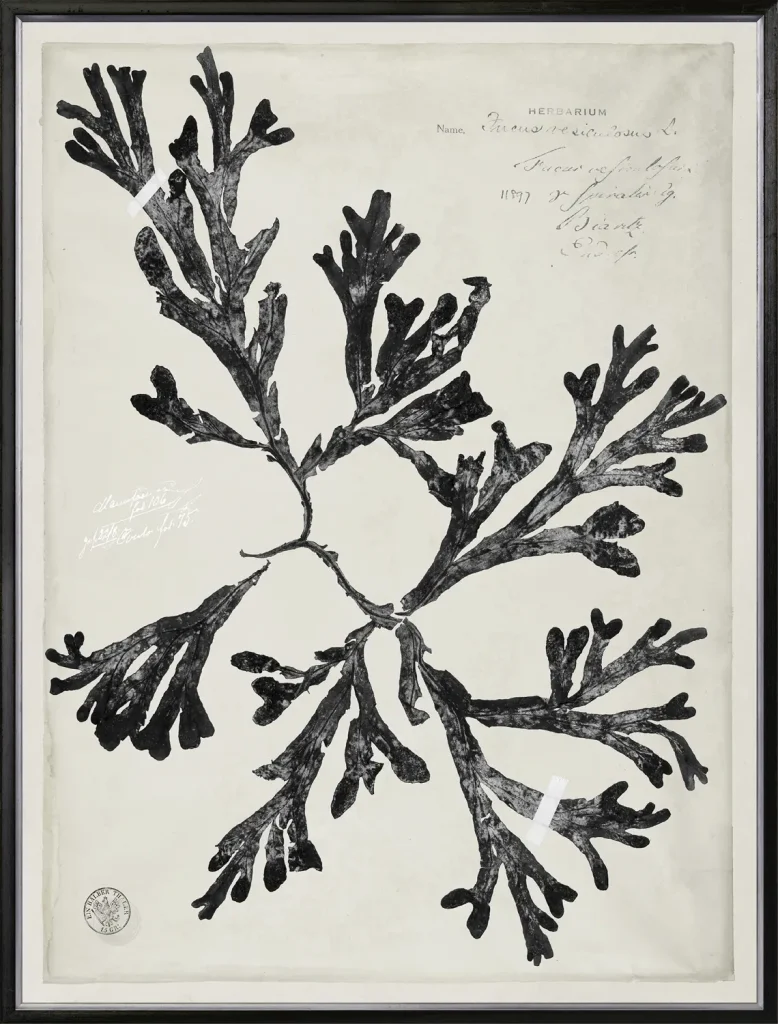
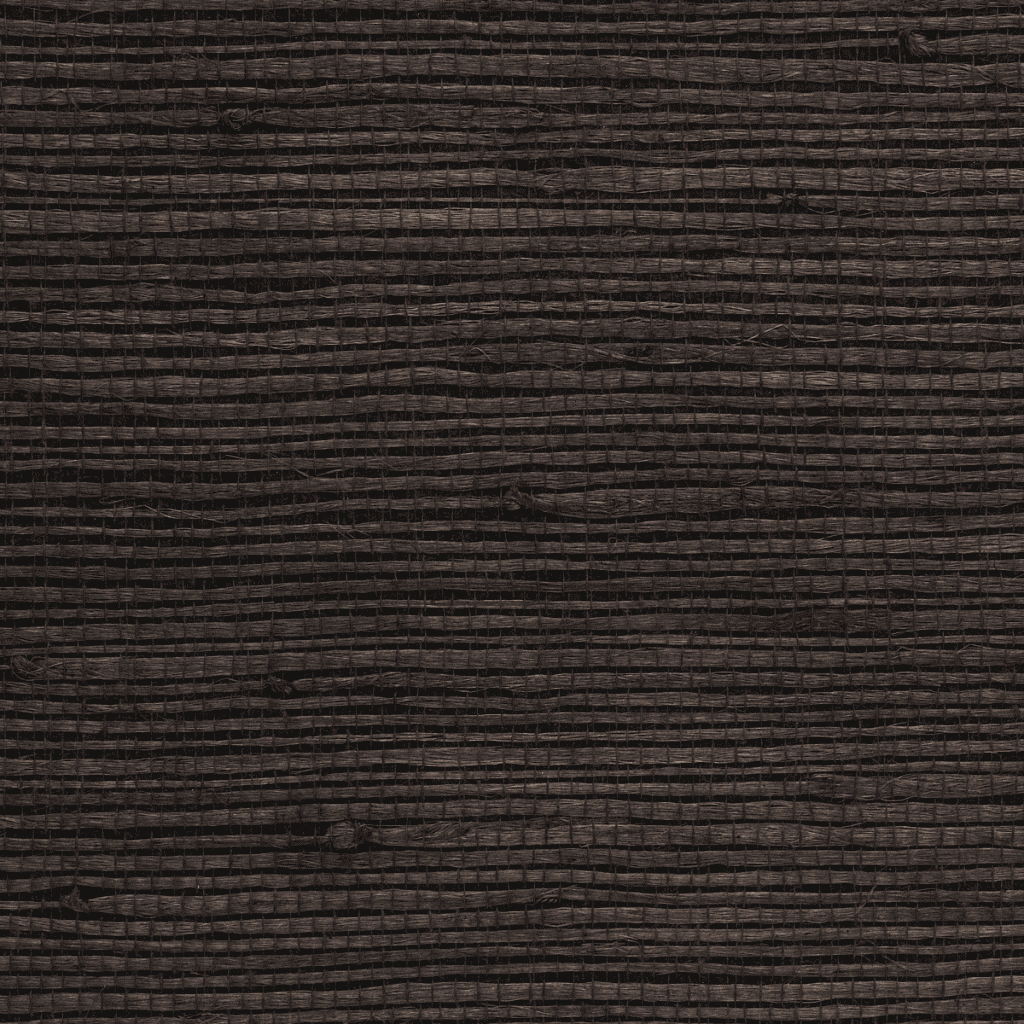
Antiques
For as many folks we hear complaining about how their children don’t want their 16 piece cherry dining set, there are young people scooping up French antiques and 70’s rattan like there’s no tomorrow. There is a pervasive myth that the younger generations don’t care about buying quality furniture and eschew anything traditional. However, there is a deep concern for sustainability and ethical consumption amongst the under 30 crowd, and coupled with the resurgence of so many styles from the past, antiquing and thrifting have become the norm for many.
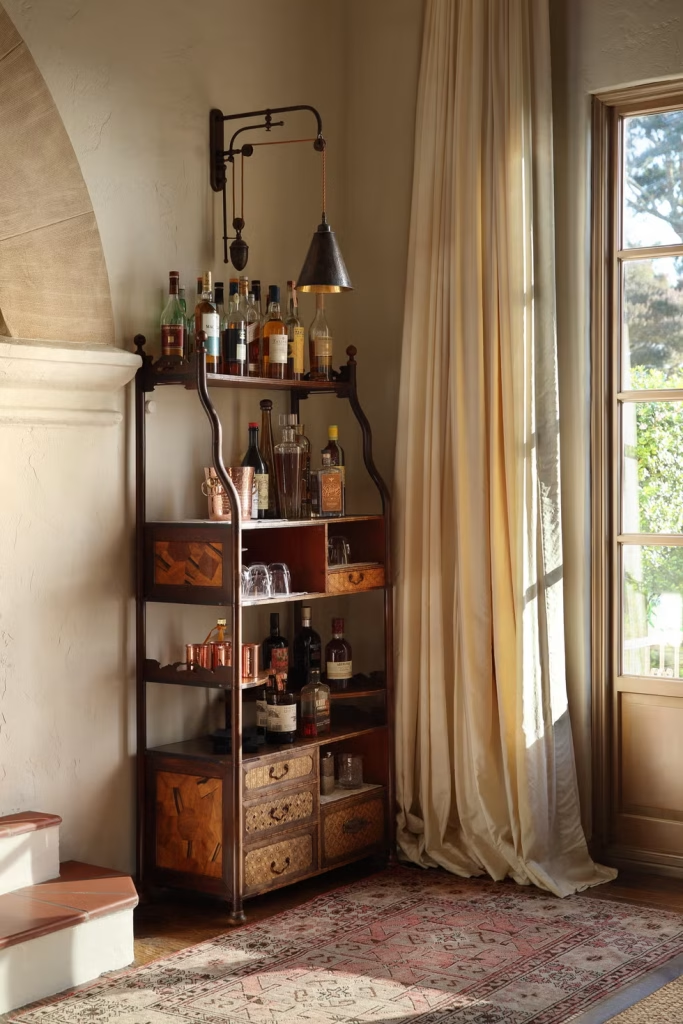
By and large, an appreciation of and yearning for antique furniture, artwork, and decor is having a huge moment again. This is fantastic for several reasons: generally these pieces are well constructed and will last longer, this practice keeps items out of landfills, and so much character is added to a space through the incorporation of antiques! Instead of having the same West Elm furniture as everyone else, you gain the opportunity to hunt for something special and one-of-a-kind.
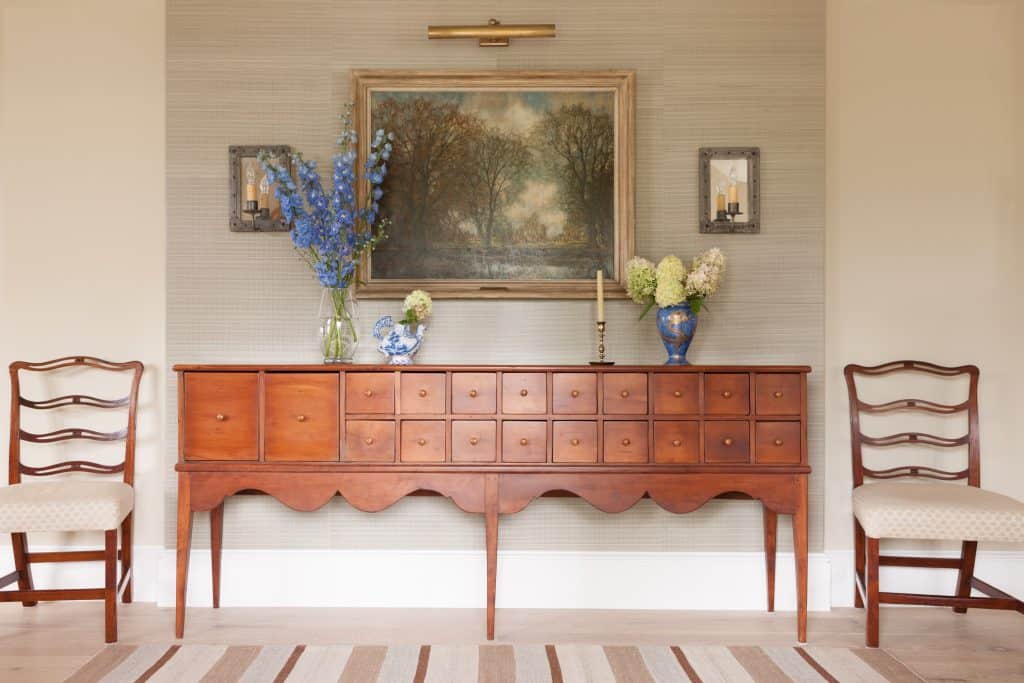
Half the fun of discovering antique finds for your home is the journey and the memories you make along the way! You’ll always be able to reminisce about the time you found that sideboard while on a weekend trip to Prince Edward County. This is not a process that you want to rush. The right piece will often come along when you least expect it.
A Word On Trends
Depending on who you speak to, the word “trend” can either have a negative or positive connotation. some view trends as fleeting fancies, and others view them as a necessary part of the cycle of fashion and interiors. The reality is that both can be true at the same time. The enduring classic styles of today were at some point born of a trend. Some trends are fleeting, and others do last.
While our taste here at Rousseau’s is not exactly what one might refer to as “trendy”, we believe it’s important to be aware of past, current, and upcoming trends so we can understand the overall shifts happening in the design world as well as know what our clients are being exposed to. This in no way means we are fans of every single trend, nor do we see staying power in many of them.
Incorporating trends into your decor can be fun! You just want to be sure that your main investment pieces and overall design scheme do not read as trendy, as this look will quickly feel dated.
The beauty of design is that it is highly subjective and you are absolutely allowed to cherry pick elements you love from any style and leave behind the ones you don’t. Blending these different elements of style to create a beautiful, cohesive result (as opposed to feeling like a mish-mash) is a mix of art and science, and it is well worth hiring a professional to assist you with this process.
What are your thoughts on these 2025 interior trends?

